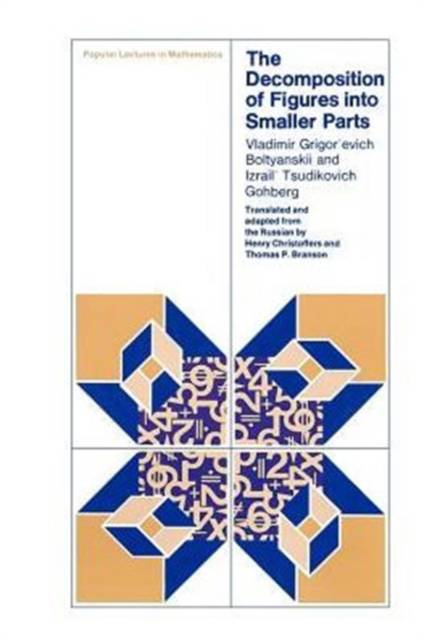
- Afhalen na 1 uur in een winkel met voorraad
- Gratis thuislevering in België vanaf € 30
- Ruim aanbod met 7 miljoen producten
- Afhalen na 1 uur in een winkel met voorraad
- Gratis thuislevering in België vanaf € 30
- Ruim aanbod met 7 miljoen producten
Zoeken
The Decomposition of Figures Into Smaller Parts
Vladimir Grigor'evich Boltyanskii, Izrail' Tsudikovich Gokhberg
€ 50,95
+ 101 punten
Omschrijving
In contrast to the vast literature on Euclidean geometry as a whole, little has been published on the relatively recent developments in the field of combinatorial geometry. Boltyanskii and Gohberg's book investigates this area, which has undergone particularly rapid growth in the last thirty years. By restricting themselves to two dimensions, the authors make the book uniquely accessible to interested high school students while maintaining a high level of rigor. They discuss a variety of problems on figures of constant width, convex figures, coverings, and illumination. The book offers a thorough exposition of the problem of cutting figures into smaller pieces. The central theorem gives the minimum number of pieces into which a figure can be divided so that all the pieces are of smaller diameter than the original figure. This theorem, which serves as a basis for the rest of the material, is proved for both the Euclidean plane and Minkowski's plane.
Specificaties
Betrokkenen
- Auteur(s):
- Uitgeverij:
Inhoud
- Aantal bladzijden:
- 80
- Taal:
- Engels
- Reeks:
Eigenschappen
- Productcode (EAN):
- 9780226063577
- Verschijningsdatum:
- 15/04/1980
- Uitvoering:
- Paperback
- Formaat:
- Trade paperback (VS)
- Afmetingen:
- 154 mm x 229 mm
- Gewicht:
- 90 g

Alleen bij Standaard Boekhandel
+ 101 punten op je klantenkaart van Standaard Boekhandel
Beoordelingen
We publiceren alleen reviews die voldoen aan de voorwaarden voor reviews. Bekijk onze voorwaarden voor reviews.








